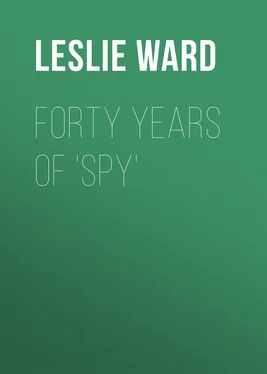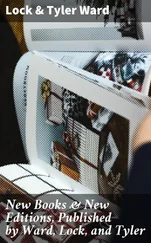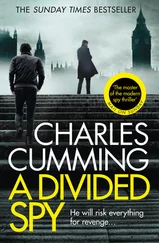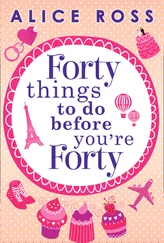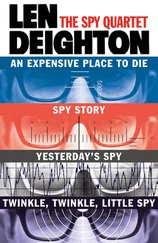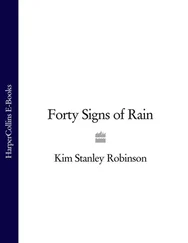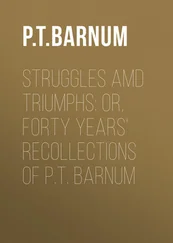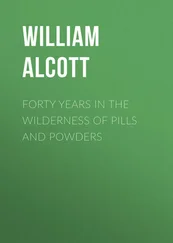Leslie Ward - Forty Years of 'Spy'
Здесь есть возможность читать онлайн «Leslie Ward - Forty Years of 'Spy'» — ознакомительный отрывок электронной книги совершенно бесплатно, а после прочтения отрывка купить полную версию. В некоторых случаях можно слушать аудио, скачать через торрент в формате fb2 и присутствует краткое содержание. Издательство: Иностранный паблик, Жанр: foreign_prose, foreign_home, visual_arts, на английском языке. Описание произведения, (предисловие) а так же отзывы посетителей доступны на портале библиотеки ЛибКат.
- Название:Forty Years of 'Spy'
- Автор:
- Издательство:Иностранный паблик
- Жанр:
- Год:неизвестен
- ISBN:нет данных
- Рейтинг книги:4 / 5. Голосов: 1
-
Избранное:Добавить в избранное
- Отзывы:
-
Ваша оценка:
- 80
- 1
- 2
- 3
- 4
- 5
Forty Years of 'Spy': краткое содержание, описание и аннотация
Предлагаем к чтению аннотацию, описание, краткое содержание или предисловие (зависит от того, что написал сам автор книги «Forty Years of 'Spy'»). Если вы не нашли необходимую информацию о книге — напишите в комментариях, мы постараемся отыскать её.
Forty Years of 'Spy' — читать онлайн ознакомительный отрывок
Ниже представлен текст книги, разбитый по страницам. Система сохранения места последней прочитанной страницы, позволяет с удобством читать онлайн бесплатно книгу «Forty Years of 'Spy'», без необходимости каждый раз заново искать на чём Вы остановились. Поставьте закладку, и сможете в любой момент перейти на страницу, на которой закончили чтение.
Интервал:
Закладка:
Sir Leslie Ward
Forty Years of 'Spy'
CHAPTER I
EARLY DAYS
I come into the world.—The story of my ancestry.—My mother.—Wilkie Collins.—The Collins family.—Slough and Upton.—The funeral of the Duchess of Kent.—The marriage of the Princess Royal.—Her Majesty Queen Victoria and the Prince Consort.—Their visits to my parents' studios.—The Prince of Wales.—Sir William Ross, R.A.—Westminster Abbey.—My composition.—A visit to Astley's Theatre.—Wilkie Collins and Pigott.—The Panopticon.—The Thames frozen over.—The Comet.—General Sir John Hearsey.—Kent Villa.—My father.—Lady Waterford.—Marcus Stone and Vicat Cole.—The Crystal Palace.—Rev. J. M. Bellew.—Kyrle Bellew.—I go to school.—Wentworth Hope Johnstone.
In the course of our lives the monotonous repetition of daily routine and the similarity of the types we meet make our minds less and less susceptible to impressions, with the result that important events and interesting rencontres of last year—or even of last week—pass from our recollection far more readily than the trifling occurrences and casual acquaintanceships of early days. The deep indentations which everything makes upon the memory when the brain is young and receptive, when everything is novel and comes as a surprise, remain with most men and women throughout their lives. I am no exception to this rule; I remember, with extraordinary clearness of vision, innumerable incidents, trivial perhaps in themselves, but infinitely dear to me. They shine back across the years with a vivid outline, the clearer for a background of forgotten and perhaps important events now lost in shadow.
I was born at Harewood Square, London, on November 21st, 1851, and I was named after my godfather, C. R. Leslie, R.A., the father of George Leslie, R.A.
My father, E. M. Ward, R.A., the only professional artist of his family, and the nephew by marriage of Horace Smith (the joint author with James Smith of "The Rejected Addresses"), fell in love with Miss Henrietta Ward (who, although of the same name, was no relation), and married her when she was just sixteen. My mother came of a long line of artists. Her father, George Raphael Ward, a mezzotint engraver and miniature painter, also married an artist who was an extremely clever miniature painter. John Jackson, R.A., the portrait painter in ordinary to William IV., was my mother's great-uncle, and George Morland became related to her by his marriage with pretty Anne Ward, whose life he wrecked by his drunken profligacy. His treatment of his wife, in fact, alienated from Morland men who were his friends, and amongst them my great-grandfather, James Ward (who, like my father, married a Miss Ward, an artist and a namesake). James Ward, R.A., was a most interesting character and an artist of great versatility. As landscape, animal, and portrait painter, engraver, lithographer, and modeller, his work shows extraordinary ability. In his early days poverty threatened to wreck his career, but although misfortune hindered his progress, he surmounted every obstacle with magnificent courage and tenacity of purpose. On the subject of theology, his artistic temperament was curiously intermingled with his faith, but when he wished to embody his mysticism and ideals in paint, he failed. On the other hand, we have some gigantic masterpieces in the Tate and National Galleries which I think will bear the test of time in their power and excellence. "Power," to quote a contemporary account of James' life, "was the keynote of his work, he loved to paint mighty bulls and fiery stallions, picturing their brutal strength as no one has done before or since." He ground his colours and manufactured his own paints, made experiments in pigments of all kinds, and "Gordale Scar" is a proof of the excellence of pure medium. The picture was painted for the late Lord Ribblesdale, and when it proved to be too large to hang on his walls, the canvas was rolled and stored in the cellars of the British Museum. At the rise and fall of the Thames, water flooded the picture; but after several years' oblivion it was discovered, rescued from damp and mildew, and after restoration was found to have lost none of its freshness and colour.
As an engraver alone James Ward was famous, but the attraction of colour, following upon his accidental discovery—that he could paint—made while he was repairing an oil painting, encouraged him to abandon his engraving and take up the brush. This he eventually did, in spite of the great opposition from artists of the day, Hoppner amongst them, who all wished to retain his services as a clever engraver of their own work. William Ward, the mezzotint engraver, whose works are fetching great sums to-day, encouraged his younger brother, and James held to his decision. He eventually proved his talent, but his triumph was not achieved without great vicissitude and discouragement. He became animal painter to the King, and died at the great age of ninety, leaving a large number of works of a widely different character, many of which are in the possession of the Hon. John Ward, M.V.O.
The following letters from Sir Edwin Landseer, Mulready, and Holman Hunt to my father, show in some degree the regard in which other great artists held both him and his pictures:—
November 21st, 1859.My dear Sir,
… I beg to assure you that not amongst the large group of mourners that regret him will you find one friend who so appreciated his genius or respected him more as a good man.
Believe me, Yours sincerely, E. Landseer. Linden Grove, Notting Hill, June 1st, 1862.Dear Sir,
I agree with my brother artists in their admiration of your wife's grandfather's pictures of Cattle, now in the International Exhibition, and I believe its being permanently placed in our National Gallery would be useful in our school and an honour to our country.
I am, Dear Sir, Yours faithfully, W. Mulready. June 26th, 1862.My dear Sir,
… It is many years now since I saw Mrs. Ward's Grandfather's famous picture of the "Bull, Cow, and Calf." I have not been able to go and see it in the International Exhibition. My memory of it is, however, quite clear enough to allow me to express my very great admiration for the qualities of drawing, composition, and colour for which it is distinguished. In the two last particulars it will always be especially interesting as one of the earliest attempts to liberate the art of this century from the conventionalities of the last....
Yours very truly, W. Holman Hunt.My mother's versatile talent has ably upheld the reputation of her artistic predecessors; she paints besides figure-subjects delightful interiors, charming little bits of country life, and inherits the gift of painting dogs, which she represents with remarkable facility.
Although both my parents were historical painters, my mother's style was in no way similar to my father's. Her quality of painting is of a distinctive kind. This was especially marked in the painting of "Mrs. Fry visiting Newgate," one of the most remarkable of her pictures. The picture was hung on the line in the Royal Academy, and after a very successful reception was engraved. Afterwards, both painting and engraving were stolen by the man to whom they were entrusted for exhibition round the country; this man lived on the proceeds and pawned the picture. Eventually the painting was recovered and bought for America, and it is still perhaps the most widely known of the many works of my mother purchased for public galleries.
It is not surprising, therefore, that I should have inherited some of the inclinations of my artistic progenitors.
My earliest recollection is of a sea-trip at the age of four, when I remember tasting my first acidulated drop, presented me by an old lady whose appearance I can recollect perfectly, together with the remembrance of my pleasure and the novelty of the strange sweet.
Читать дальшеИнтервал:
Закладка:
Похожие книги на «Forty Years of 'Spy'»
Представляем Вашему вниманию похожие книги на «Forty Years of 'Spy'» списком для выбора. Мы отобрали схожую по названию и смыслу литературу в надежде предоставить читателям больше вариантов отыскать новые, интересные, ещё непрочитанные произведения.
Обсуждение, отзывы о книге «Forty Years of 'Spy'» и просто собственные мнения читателей. Оставьте ваши комментарии, напишите, что Вы думаете о произведении, его смысле или главных героях. Укажите что конкретно понравилось, а что нет, и почему Вы так считаете.
